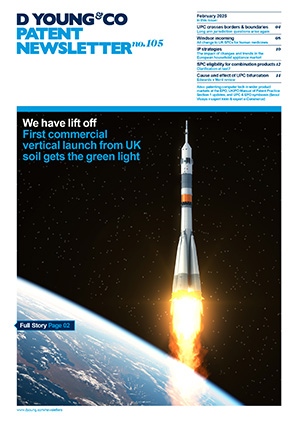UK AI & IP consultation: analysis of the UK Government response
The UK Government has issued its response to a consultation recently conducted into artificial intelligence (AI) and intellectual property (IP). The consultation explored three areas of patent and copyright law particularly relevant to the commercial exploitation of AI. Here we explore the response in detail, building on our earlier articles (see "related articles" for links) summarising the outcomes of the consultation.
Copyright in computer-generated works
The consultation considered the copyright protection available for computer-generated works (CGWs).
Computer-generated works are works generated by a computer in circumstances such that the works have no human author. Examples of computer-generated works include automated reports and computer-generated artworks. In many examples, computer-generated works may be created with the assistance of, or entirely by, an AI.
The current UK copyright system allows computer-generated works to be protected by copyright. The Copyright, Designs and Patents Act (CDPA) 1988 accords authorship, and thereby first ownership, to the person “by whom the arrangements necessary for the creation of the work are undertaken”, and provides a 50 year period of protection.
The consultation sought opinions on whether computer-generated works should continue to be protected by copyright and, if so, for how long. In a previous newsletter article (link below), we explained why our preferred option would be to make no legal change. Despite some respondents arguing against this option, including arguments that protection for computer-generated works risked crowding-out human creators, the UK Government decided to make no legal change for now. The reasoning provided was that the use of AI to create computer-generated works is still an emerging technology and so the impacts of any change would be hard to predict.
Related article
AI & IP consultation - focus on copyright for computer-generated works, 29 April 2022.
Read moreTherefore, following the consultation, UK law continues to protect computer-generated works, providing an incentive for the use of AI in creating works.
Patents
The consultation also considered the inventorship of patents in cases where an invention has been created with the use of an AI.
The UK Patents Act defines an inventor as the “actual deviser” of an invention. In the recent Thaler case (Thaler v Comptroller General of Patents Trade Marks And Designs [2021] EWCA Civ 1374, 21 September 2021), the Court of Appeal agreed that the Patents Act requires an inventor to be a “person”, and that AI systems do not qualify as a person. Hence, for now, an AI cannot be considered an inventor on a patent in the UK. However, the Court of Appeal in Thaler did not come to a unanimous agreement on whether this precludes from protection inventions alleged to be invented solely by an AI. The Thaler case will now be heard before the Supreme Court, and therefore further answers should follow.
In the meantime, the present consultation sought views on whether the definition of inventor should be changed, and if so whether it should include AIs and/or include humans responsible for an AI system which creates inventions.
Whilst some respondents, D Young & Co included, argued that the definition of inventor should include humans responsible for the AI, others felt that this might be disingenuous when the invention was devised by an AI. Some argued that the definition of inventor should include AIs, and that doing so would incentivise the development of AI in the UK. However, the UK Government again decided to make no change to the law, preferring the UK to remain harmonised with other countries where AI cannot be named as an inventor. This will avoid potential difficulties in claiming priority from applications in countries which have different rules regarding AIs as inventors.
Related article
In a related development, the UK Intellectual Property Office (UKIPO) has released its first ever guidance for examiners on how to examine AI inventions, which is discussed in the article “Examination of AI inventions at the UKIPO - Certainty at last?”
Read moreText and data mining
The consultation also considered exceptions to copyright for text and data mining (TDM). text and data mining is defined in the CDPA 1988 as a computational analysis of anything recorded in a work. The training of AI systems by feeding them sets of training data will typically fall within this definition of text and data mining.
Carrying out text and data mining, especially for the purposes of training an AI, may involve acts of the type which constitute copyright infringement. These include producing copies of training data, formatting data to be used for training, and storing copies of training data for future validation and analysis of the AI. However, under the exception set out in section 29A CDPA 1988, any copies of a work made for the purposes of text and data mining do not infringe copyright, subject to certain conditions.
A first condition is that the person carrying out text and data mining on a work must have lawful access to the work. A second condition of the current law is that the text and data mining must be for the sole purpose of non-commercial research. This second condition severely limits the scope of the current exception, leaving any commercial applications of text and data mining, such as training a commercial AI, open to the possibility of copyright infringement.
Following the consultation, the UK Government has decided to relax the second condition and extend the copyright exception to text and data mining for any purpose. The UK Government felt that extending the exception, especially to encompass commercial text and data mining, would encourage investment in AI projects in the UK, relaxing some of the restrictions which might otherwise make the UK a less appealing environment for AI development. The consultation response explained why alternative options were considered less desirable than a complete text and data mining exception, with licensing for text and data mining difficult due to the requirement to identify a large number of licensors in typical sets of training data and opt-outs from the exception presenting similar practical challenges.
Whilst rights holders will no longer be able to charge license fees for the use of works in text and data mining, the requirement for lawful access remains. This requirement provides an avenue by which rights holders may still commercialise works by restricting access behind a fee.
In our response to the consultation, we supported extending the text and data mining exception to allow text and data mining for commercial research and databases. Whilst we felt that the proposed exception allowing text and data mining for any purpose would achieve similar results in encouraging commercialisation of AI, we warned that allowing text and data mining for “any purpose” could invite unintended consequences.
Therefore, the wording of any new legislation to implement the proposed changes is key.
Notably, the new exception should not remove from the persons responsible for the AI any liability for copyright infringement by the results of the AI. The exception should apply only to the use of works for training an AI but not for any downstream uses of that AI. Otherwise, it is foreseeable that methods could be developed to effectively “wash” the copyright from an earlier work. For example, an AI could be trained on a highly restricted dataset, as limited as a single work, and thereby produce outputs that are extremely similar or identical to the works used as training data. For the continued effectiveness of the copyright system, it is desirable that the outputs of AI systems can still be considered infringing copies even in cases where the training of such an AI falls within the new copyright exception.
However, it may not always be easy to determine whether an output of an AI is an infringing copy. For example, developments in AI technology have led to AI programs which can produce artworks of impressive quality, with AI-produced artworks winning art competitions against entries produced by humans. The proposed new exception suggests that it will be allowable to freely train such AIs using the works of human artists. Where such an AI is trained using the artworks of hundreds of artists, and produces an output combining elements of several works, it may be difficult to see how this varies from the way a human artist is inspired by previous artworks.
However, it is interesting to consider whether it would be treated any differently if the AI were trained on the works of a small group of artists, or even the works of a single artist. In each case, the output may not be a strict copy of any work in the training set but may nevertheless be similar in many ways, raising the question of where the cut-off lies between copyright-washing and legitimate use of an AI.
Conclusion
AI is a rapidly developing technology with many implications for intellectual property. In its response to the consultation, the UK Government has outlined an approach with a strong emphasis on promoting investment in AI in the UK.
By making no change to the law regarding patents and computer-generated works, the law continues to encourage the use of AI in innovation. By introducing a new copyright exception for text and data mining, the UK Government also encourages the development of AI.
The development of the law is ongoing, and the upcoming decision of the Supreme Court in Thaler, and the wording of the new copyright exception, may shed more light on the future of AI and IP in the UK.
Useful link
Consultation outcome - Artificial Intelligence and IP: copyright and patents, 28 June 2022.
Read more


